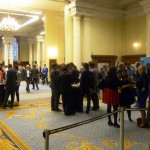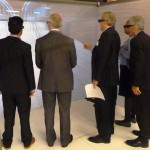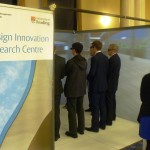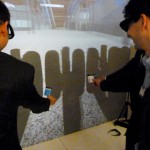On Thursday the 25th September 2014, Dr Maxwell Mallia-Parfitt, Ed Norman (EPSRC summer placement student) and Professor Jennifer Whyte demonstrated the Mobile Visualization Environment (3D MOVE) to 400 young engineers from Crossrail in Westminster.
This event showcased the University’s research capacity and engineering research in this area. The 3D MOVE is a mobile version of the University of Reading’s CAVE facility, which enables a group of users to stand within a 1:1 scale simulation of built environments, in this case Whitechapel station – part of the Crossrail network.
Ed Norman’s contribution was essential to this demonstration, both in preparing models and scripts, as well as liaising with young engineers and senior directors from Crossrail. His work over the last 10 weeks has driven our software capabilities to new heights and has enabled many new features not seen before in immersive virtual reality. His work, funded by the EPSRC, will continue to be used for future demonstrations as well as strengthen research output from the Design Innovation Research Centre.







